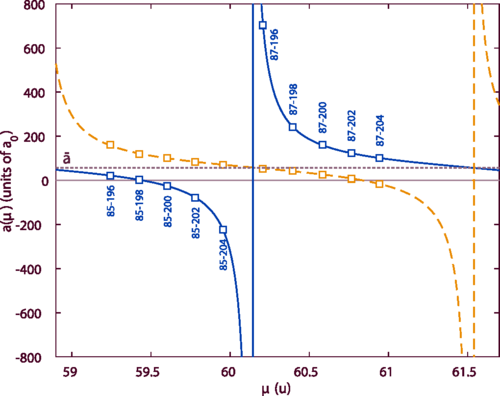The HgRb team reported theoretical calculations for Optical Feshbach resonances and ground-state-molecule production in the RbHg system. You can see the article here:
https://doi.org/10.1103/PhysRevA.96.063411
We present the prospects for photoassociation, optical control of interspecies scattering lengths, and, finally, the production of ultracold absolute ground-state molecules in the Rb+Hg system. We use the state-of-the-art ab initio methods for the calculations of ground- [CCSD(T)] and excited-state (EOM-CCSD) potential curves. The RbHg system, thanks to the wide range of stable Hg bosonic isotopes, offers possibilities for mass tuning of ground-state interactions. The optical lengths describing the strengths of optical Feshbach resonances near the Rb transitions are favorable even at large laser detunings. Ground-state RbHg molecules can be produced with efficiencies ranging from about 20% for deeply bound to at least 50% for weakly bound states close to the dissociation limit. Finally, electronic transitions with favorable Franck-Condon factors can be found for the purposes of a STIRAP transfer of the weakly bound RbHg molecules to the absolute ground state using commercially available lasers.
